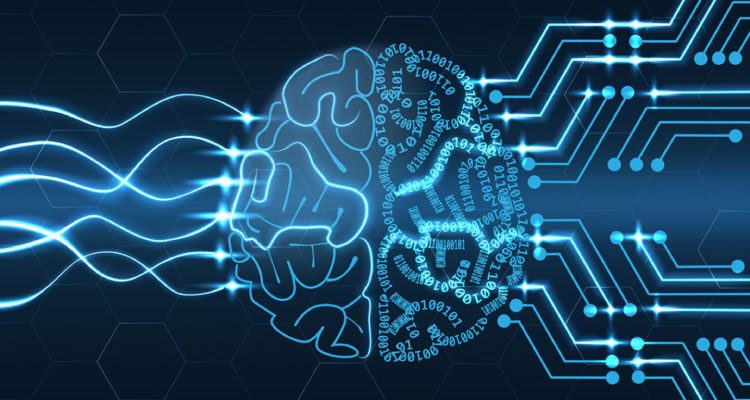The world we live in is surrounded by technology. Everybody has a smartphone nowadays, which means the internet entails. Since we’ve got these scaled-down computers in our pockets, simple tasks such as setting alarms or listening to tracks have become familiar. The ‘smart’ prefix with phones means our mobile devices are smart enough to simultaneously perform various tasks. But within these devices, there are numerous parts and technology that work in tandem, some of which are beyond our understanding. Artificial Intelligence is one such branch of computer science that imitates a human mind, helping us execute and solve various tasks.
Max Tegmark, President of the Future of Life Institute, once stated that “Everything we love about civilization is a product of intelligence, so amplifying our human intelligence with artificial intelligence has the potential of helping civilization flourish like never before – as long as we manage to keep the technology beneficial.” This statement reflects today’s world where even a computer can beat the human strategies in a chess match or translate $10 into INR (₹). Even though many of us believe that this is the best time to live, real AI is yet to show what it’s capable of in terms of technology.
Artificial Intelligent is not hard to understand, but the myths and assumptions don’t help its cause. Some believe that it’s the future, while some say it will overtake the human mind *cough* Elong Musk *cough*. To put it bluntly, most of us aren’t familiar with the core meaning of AI. So, if you are curious about AI, I have laid out risks and advantages, myths, and examples that might give you a better grasp of the concept.
What is Artificial Intelligence?
Artificial intelligence allows machines and computers to imitate the learning, decision-making capabilities, perception, and problem-solving of the human mind. It’s a broad-ranging department of computer science involved with building smart machines competent in executing tasks that need human intelligence in most cases. AI combines two or more science branches with varied approaches, coupled with machine learning progressions and deep learning, generating a paradigm shift in essentially every tech industry sector.

Artificial Intelligence can learn from experiences and instances from which they understand and respond to languages, recognize objects, and make decisions to solve issues. AI will also execute easy and/or complex tasks such as converting currencies driving a car. It is a human-like intelligence displayed by a machine, robot, or computer, the field of computer science.
If you have heard of AI before the age of digital assistants and Tesla cars, it would have been in Hollywood movies where it was consigned to pure science fiction, where machines take over the world. Fast forward to 2021; AI is a part of our day-to-day lives. The rise of AI development is possible due to the unexpected availability of considerable amounts of data, analogous growth, and the ubiquitous computing systems capable of processing all that data swiftly and more accurately than humans. AI is universal – in the texts we type, the directions on the map we reach, next binge-watch recommendations, suggestions of what we should buy, etc.
As common as artificial intelligence is today, understanding AI and AI terminology can be difficult because many terms are used interchangeably. While they are actually interchangeable in some cases, they aren’t in other cases. What’s the difference between artificial intelligence and machine learning? Between machine learning and deep learning? Between speech recognition and natural language processing? Between weak AI and strong AI? This article will try to help you sort through these and other terms and understand the basics of how AI works.
Alan M. Turing is an essential name in the foundation of AI. The mathematician, responsible for helping Allied Forces win World War II by decoding the Nazi encryption machine Enigma, had asked an essential question – “Can machines think?” His paper, “Computing Machinery and Intelligence,” published in 1950 and its succeeding Turing Test, authenticated the primary purpose and concept of artificial intelligence.
You can think of AI as the branch of computer science striving to elucidate Turing’s question as a possibility. The branch is the attempt to replicate human intelligence in machines. Moreover, AI’s broad goal has given acceleration to several questions and discussions, which renders the many definitions of AI quite useless. The common answer to ‘What is AI?’ would be “building machines that are intelligent.”
Stuart Russell and Peter Norvig, authors of the inventive textbook ‘Artificial Intelligence: A Modern Approach,’ address the aforementioned question by consolidating their work around intelligent agents’ themes in machines, thus defining AI as “The study of agents that receive percepts from the environment and perform actions.”
Prominent Examples of Artificial Intelligence
To better understand AI, I have listed a few examples.
1. Digital Assistants

Siri is a personal assistant created by Apple for iPhone and iPad. It interacts with the user regularly. The assistant assists us in menial tasks such as getting information, directions, sending messages, making calls, or even opening applications. Siri uses machine-learning technology to get more intelligent and competent to understand language questions and requests. Google Assistant and Amazon Alexa are built on a similar system.
2. Amazon Echo
Launched by Amazon, it gets smarter with every added feature. This revolutionary smart speaker helps you schedule appointments, control lights, shop, answer questions, play songs, search the internet for information, and so on.
3. Tesla
Tesla is proof that the automobile industry is accepting Artificial Intelligence. Its cars are one of the best automobiles with AI currently. It can execute not only unusual tasks such as self-driving, predictive capabilities but also absolute technological innovation. The car is getting brighter day by day through OTA updates.
4. Netflix
Netflix is everywhere now. This well-known OTT platform offers suggestions based on consumers’ choices, reactions, interests, and behavior. All this happens when the technology behind it examines several records to advise movies based on the user’s previous liking and reactions. It is no doubt becoming more intelligent with each passing year.
5. Pandora
Pandora is a well-known Pandora is an American subscription-based music streaming service owned by Sirius XM Holdings. It’s one of the highly commended tech solutions that exist. Also known as the ‘DNA of music,’ its expert musicians independently analyze the songs. The model is superb at suggesting songs that would never get mentioned.
6. Cogito
Cogito is one of the biggest examples of AI, a behavioral version that improves customer support agents’ ability and intelligence on the market. This firm is a blended unit of behavioral science and machine learning that enhances customer collaboration for phone experts. Its AI solution examines the human voice and provides real-time supervision to improve behavior.
7. Google Nest
Google acquired Nest for $3.2 billion in 2014. It was one of the well-known and successful artificial intelligence startups. The Nest Learning Thermostat applies behavioral algorithms to save power based on your schedule and behavior. It can automatically turn off to save energy if it predicts that the home is empty. The method employs a brilliant machine learning process that learns the temperature you like and then programs itself in a week. This tech is an amalgamation of Bluetooth low-energy and Artificial Intelligence as some of its components use BLE services and solutions.
8. Drones
Flying drones aren’t new things – many are already using them to get creative work done. They are proof that a compelling machine learning system can transpose the environment into a 3D model through video cameras and, more importantly, sensors. The cameras and sensors can discern the drones’ position in the room by attaching them to the roof or ceiling. They can be controlled using Wi-Fi. They are predominantly used for video-making, product delivery, or even news reporting.
Artificial Intelligence, Machine Learning, and Deep Learning
Artificial Intelligence has a deep-rooted relationship with Machine Learning and Deep Learning. AI is a world of computing technology that displays anything that remotely resembles human intelligence. The AI operations can consist of anything that develops the emotions and emotions of a human being.
Machine learning is a sub-category of AI applications that learns by itself. It can reprogramming itself since it can digest more data, enabling it to complete the specific task assigned to perform with increasingly greater efficiency. Deep learning is also a subset of machine learning applications that teaches itself to execute tasks with great mastery, without human interference.
The Various Types of AI
Artificial Intelligence can be primarily be classified into four distinct types. The simple AI can execute simple functions, while the advanced level is the All-knowing (Mohammad), all-seeing (Buddha), and self-aware consciousness (Christian Saint). These types are comparable to Maslov’s hierarchy of needs.
1. Reactive Machines:
Reactive Machines are the simplest of A.I. bunch that execute basic operations. It’s also the first stage of an A.I. system. These types respond to input with output, but no learning takes place. This is the first stage of an A.I. system. Their models can be traded, downloaded, loaded into the developer’s toolkit, and are often passed around.
2. Limited Memory:
This type stores previous predictions and data, in turn, using the said data to make more useful predictions. Due to Limited Memory, the machine learning structure becomes a little more complicated. The three major kinds of machine learning models achieve this Limited Memory type: Reinforcement learning, Long Short Term Memory (LSTMs), and Evolutionary Generative Adversarial Networks (E-GAN).
3. Theory of Mind:
Theory of Mind is in its nascent form, but it is seen present in self-driving cars. In this type, the AI begins to communicate with the emotions and thoughts of humans. Current patterns have a one-way relationship with A.I. Alexa, Google Assistance, and Siri bow to every command. While using Google Maps by yelling angrily at it, it won’t reciprocate your emotions. Instead, Google Maps will continue to show you direction.
4. Self-Aware:
A self-aware type of AI exists only in fiction and stories. It would be capable of instilling fear and hope into the audience. If in the distant future, AI becomes self-aware, it will have independent intelligence.
Weak AI vs. Strong AI
Artificial Intelligence can also be categorized into Weak AI (Artificial Narrow Intelligence, ANI) and Strong AI (Artificial General Intelligence, AGI).
Artificial Narrow Intelligence (ANI) or Narrow AI focuses on performing particular tasks. The term ‘Narrow’ is appropriate here because it is anything but. It facilitates Apple’s Siri, Google Assistant, and Amazon’s Alexa, and self-driving cars.
Artificial General Intelligence or Strong AI can fully imitate a human’s brain by solving various problems or selecting the problems it wants to resolve without human mediation. Unfortunately, strong AI is totally theoretical, so that you won’t find any practical instances today. That being said, AI researchers aren’t too curious to explore artificial superintelligence (ASI), which is artificial intelligence superior to human ability. A Space Odyssey’s HAL, the rogue superhuman computer assistant, is the perfect example.
Additional types of A.I:
Artificial Narrow Intelligence
Artificial General Intelligence
Artificial Super Intelligence
The Future of AI
AI oracle and venture capitalist Dr. Kai-Fu Lee stated in 2018 that “AI is going to change the world more than anything in the history of humanity. More than electricity.” Two years later, one can see that Artificial intelligence is affecting the future of every industry and every human being. AI now influences technologies like robotics, big data, and IoT. It will be a technological innovator for the predictable future.
Advantages of AI
Artificial Intelligence is surging in virtually every tech industry. It is impacting our lives in ways most of us don’t know yet. AI is in your car, your pacemaker, airplane, or your power grid. It is created to make things easier for us. For instance, AI books us a cab, recommends us what to buy next or watch next.
Risks of AI
It is doubtful that Artificial Intelligence will exhibit human emotions like love or jealousy. But AI is also programmed to execute devastating tasks. You see, autonomous weapons are AI systems that are programmed to destroy. If it falls into the wrong hands, these weapons could easily cause major casualties. Moreover, one can’t get rid of AI. It is in our smartphones. If a person asks his or her car to drive to the airport, it will do so no matter what. It could wreak havoc in our lives.
Artificial Intelligence Myths
The human mind is unusual. It makes assumptions for the things that it isn’t aware of. It is the same with AI. Many myths are attached to its reputation, somewhat due to its relegation as science fiction in Hollywood movies. Rest assured, this section will debunk the popular ones.
Myth 1: AI will turn evil and rule humankind.
No, real life isn’t a Terminator sequel. AI is and will remain unconscious. The real worry should be that it’s turning competent with goals that are misaligned with ours.
Myth 2: Superintelligence is a possibility by 2100.
No one can predict the future, but one can say for sure that machines won’t get feelings. Superintelligence could happen in decades, centuries, or never. AI experts keep such assumptions at bay.
Myth 3: Luddites are the only ones super worried about AI.
False. Even though AI is helpful in numerous situations, many prominent people have voiced their concerns. Elon Musk is one of them.
Myth 4: AI will take over the field of robotics.
Never! AI doesn’t need a body; it only needs an internet connection. The primary concern should be misaligned intelligence.
Myth 5: AI isn’t capable of controlling humans.
It is actually capable. You see, intelligence enables control. We control animals by being smarter than them, so AI being intelligent than us, controls us.
Myth 6: Machines don’t have goals.
False. A heat-seeking missile has an aim, quite literally.
FAQs
What are AI and its importance?
Artificial intelligence is the basis for simulating human intelligence processes by building and applying algorithms built into a powerful computing environment. In layman’s terms, AI assists computers in acting and thinking like humans.
What are the 4 types of AI?
The four Artificial Intelligence types are ‘Reactive Machines,’ ‘Limited Memory,’ ‘Theory of Mind,’ and Self Aware.
Why is AI needed?
AI has become the core functioning of services such as Amazon Alexa, Google Assistant, Apple’s Siri virtual assistants, and many more. By now, you know that AI helps computers mimic human intelligence, but it is needed to execute and process tasks better and faster, touching some level of accuracy. Apart from virtual assistants, AI also helps to prophesy and identify fraudulent transactions, accurate credit scoring, and much more. AI is also tasked with improving the current process beyond industries and applications by generating new solutions to obstacles that are immense to deal with manually.
What are the main goals of AI?
The main aim of AI includes learning, perception, and reasoning. You’ll find that AI is being used in various industries, such as healthcare, technology, finance, etc. Weak AI executes simple tasks, whereas powerful AI is tasked with carrying intricate and human-like tasks.
How is AI helping in our life?
By now, you might know that AI heavily powers virtual digital assistants. Alexa, Google Assistant, and Siri can now interact like humans, getting our tasks done. They are developing rapidly as they learn without human interference with natural language abilities; these qualities will make the digital assistant faster and more intelligent.
Is AI a good career option?
Absolutely! The field of artificial intelligence has a colossal career opportunity with huge pay, the capability to work with life-changing technology daily, and an expanding number of engaging sub-fields. Roboticists, data analysts, and software engineers are the particular jobs that use AI.
Is AI the future?
Artificial Intelligence is the future. It is affecting the future of practically every industry, which extends to every human being. AI will proceed as a technological innovator for the future, its effects being the central driver of developing technologies like IoT, big data, and robotics.
Conclusion
When I was tasked with writing on Artificial Intelligence, it was daunting since it isn’t my area of expertise. After going through the hours of research, I can say that I know what AI is and how it works. I have conceded that it will be the next big thing in technology, which means more people opting for it as their career. One of my close friends recently began his AI course, and he can barely contain his excitement.
Related:
In simple terms, AI helps us interact with our devices, makes our lives easier, and influences how we live. Expect more developments and improvements in the coming years. If you want to get a better understanding of AI, read this article once again. You’ll be thrilled to know the future of technology and the capabilities that the human mind has reached.





